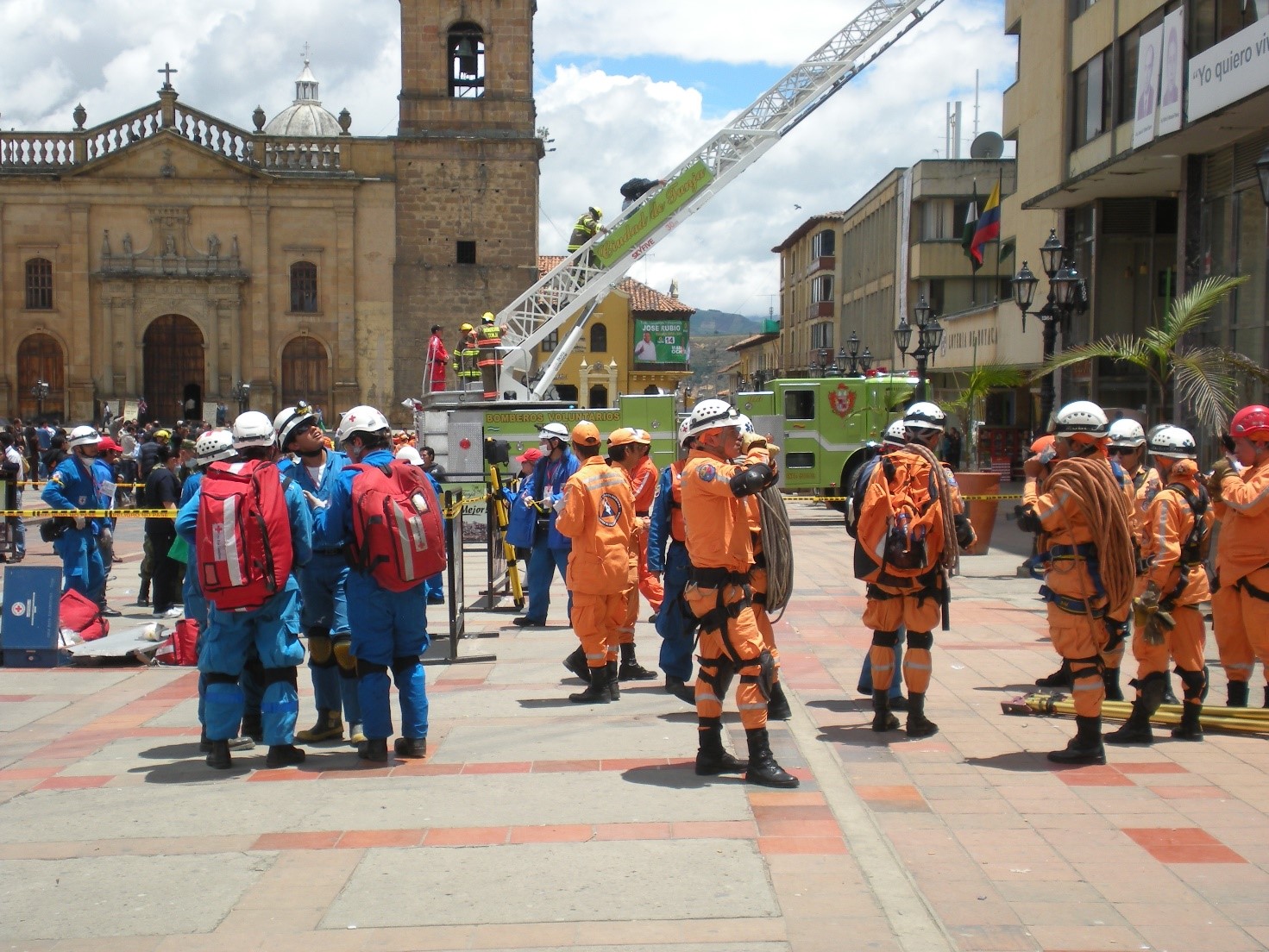
Today I have the honour to introduce Prof. David Alexander as our guest. David is Professor of Risk and Disaster Reduction  at University College London (UK). His expertise comprises holistic aspects of disaster risk reduction and practical matters in emergency planning and management. He has also worked as Scientific Director of the Advanced School of Civil Protection of the regional government of Lombardy (Italy). As a Professor at the University of Florence (2005-11) he was a leading member of the team that designed, launched and taught Italy’s first Master of Civil Protection course.
at University College London (UK). His expertise comprises holistic aspects of disaster risk reduction and practical matters in emergency planning and management. He has also worked as Scientific Director of the Advanced School of Civil Protection of the regional government of Lombardy (Italy). As a Professor at the University of Florence (2005-11) he was a leading member of the team that designed, launched and taught Italy’s first Master of Civil Protection course.
David Alexander is the founder and Editor-in-Chief of Elsevier’s International Journal of Disaster Risk Reduction and was formerly Co-Editor of Disasters journal. He is Vice-President and Chairman of the Trustees of the Institute of Civil Protection and Emergency Management, which is the oldest learned society in the field of disaster reduction. He strongly supports the idea that “we are part of the civil-protection process. […] Therefore, we should all prepare for the next disaster as remarkably few of us will be able entirely to avoid it”.
- How can we define ‘disaster emergency’?
Not all emergencies are disasters. Two books have been written on the topic of ‘What is a disaster?’, which shows that the definition is open to many different interpretations. An emergency can be defined as a situation caused by a threat or hazard that cannot be managed with ordinary, workaday procedures and resources. It requires rapid response via a qualitative change in the way things are done. Most emergencies involve actual or potential (i.e. imminent) damage and destruction, or at least serious disruption, and possibly casualties.
- Which are the methods used in planning for emergencies? Moreover, what sort of background should an aspiring emergency planner have?
The full procedure is outlined in my last book, How to Write an Emergency Plan, published in 2016 by Dunedin Academic Press. All emergencies involve a mixture of predefined procedures and improvisation. The latter should be kept to a minimum, because excessive and unwarranted improvisation denotes negligence and failure to prepare in advance for foreseeable needs. One can consider the plan rather like the score of a symphony, which the conductor of the orchestra (the planner) has, while the procedures are akin to the music of the individual instrumentalists. Emergency planning is about putting the procedures together in such a way that all significant responsibilities are covered and conflicts between responders are eliminated or minimised, as everyone has a role to play.
In the past, emergency planners and managers tended to be ex-military men, middle aged and from the ethnic majority. They tended to retain a military mind-set. Some were good, especially if they could adapt to the needs of civilian emergency management, some were less successful in this respect. Nowadays we need educated, trained, qualified emergency planners from all backgrounds. Women, in particular, are good at the necessary multi-tasking and organisational skills. We need young people in particular. It is ideal to have a degree in any relevant subject, from psychology to engineering, followed by a post-graduate qualification in disaster risk reduction, emergency management or a similar topic. The rest of the training is finished off by experience and participation. In some countries, such as the UK, emergency planning and emergency management tend to be separate, while in other countries the planners are also the managers. This might also affect what needs to be learned. However, in all cases we need to build a common language and culture of civil protection.
- Which are the stakeholders involved in an emergency plan?
We are all beneficiaries. The challenge of emergency planning in the 21st century is to involve the general public in managing some of the risk it incurs. However, commonly with emergency plans, the first group of organisations involved are the emergency services, followed by public administration at all levels from local to national or international, technical services and volunteer (civil society) organisations. The degree to which voluntarism in civil protection is developed varies widely from one country to another. In some countries it is more or less limited to spontaneous voluntarism, which is neither efficient nor effective. In others it is organised and incorporated into the system.
- Which are the characteristics of a successful emergency plan? Is there a relationship between corruption and the governance of the disaster risk?
A successful emergency plan is a living document. It is known to all main participants and it is frequently revised. Elements of it form the subject of table-top and field exercises at intervals. The plan is based on scenarios, which are explorations of possible future situations (usually expressed as an ‘envelope’ of outcomes, not a single prediction). The scenarios cover vulnerability, impact and response capability.
In a study of local emergency management in Mexico, published in the journal Disaster Prevention and Management, I used 43 indicators, in 13 categories, to express the level of development of emergency response capability. The main reason for this approach was to identify areas that should receive priority for development when resources become available.
Work carried out by Prof. Monica Escaleras and her colleagues at Florida International University suggests that at the national level corruption is the most important variable that explains earthquake disasters. It is insidious, pervasive, invasive and occult. If we use the term ‘governance’ to denote transparency and responsiveness in government, corruption diminishes these qualities and thus restricts the ability to act in favour of safety and disaster reduction. However, corruption is also a complex phenomenon. A detailed exploration of it can be found in my article “Corruption and the governance of natural disaster risk“, in the on-line Oxford Research Encyclopedia of Natural Hazard Science.
- Do you have in mind a disastrous event in which the emergency management was successful? Moreover, one with a complete, unmanaged situation?
Emergency responses are rarely, if ever, ‘completely successful’ or completely the reverse. Moreover, there may be different levels of success between the immediate response, the transitional period, and the long-term recovery and reconstruction periods. In recent Italian earthquakes I have been much struck by the fact that there have been more volunteer emergency workers in the field than members of the affected population. For example, the population of L’Aquila city is around 70,000, and in aftermath of the 2009 earthquake some 94,000 volunteers worked in the area.
I write this at the time of the Volcan Fuego eruption emergency in Guatemala. As I write, the death toll is rising. Heroic efforts are being made to search for survivors, but what stands out is the lack of warning and evacuation. Moreover, not all failures are limited to low-income countries. As I write, here in London, England, the official enquiry into the Grenfell Tower high-rise fire disaster is underway. Seventy-two people died in the fire in a 24-storey residential block. It is clear that the evacuation strategy was entirely wrong, but this is overshadowed by the many safety infringements that led to the fire and allowed it to spread with devastating rapidity and consequences. We can learn from both good and bad examples, but the important thing is that we learn. The phrase ‘lessons learned’ is widely used, but does it really mean anything? To be learned properly, a lesson has to result directly in some identifiable, measurable positive change towards greater safety, more rapid and effective emergency response or some such criterion.
